(Blog written by John Dickens)
I find it very hard to believe that I’ve been in Orkney for almost 2 weeks now. The time has flown by with the seals keeping me very busy, especially over the past few days.
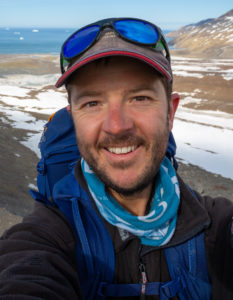
I’ll come back to the fieldwork update – first, a brief introduction. My name is John Dickens and I’ve been involved in seal and cetacean research for the past 6 years or so, having had the opportunity to work with Antarctic and subantarctic fur seals, elephant seals, leopard seals and killer whales on three very special Subantarctic islands. I studied marine biology at Rhodes University in South Africa and went on to do a masters degree in conservation biology at the University of Cape Town. I had my first experience of marine mammal research during a year working as a field assistant on Marion Island, one of the Subantarctic Prince Edward Islands belonging to South Africa. A large portion of my time on Marion was dedicated to collecting ID photos of killer whales, as well as monitoring fur seals and continuing a long running mark recapture study on southern elephant seals. I then started working for the British Antarctic Survey and ended up spending about 3 years on South Georgia. A year and half of that time was spent on Bird Island, where a major part of the job involved collecting ID photos of the leopard seals during the winter months. On South Georgia I also continued the long term monitoring of Antarctic fur seals, piloted the first UAV/drone monitoring project of seals and seabirds, and was involved with a number of penguin, albatross and petrel projects too.
The photo ID research that I am carrying out for the Harbour Seal Decline Project in Orkney is similar to photo ID work that I have done in the past. Individual animals have unique markings or patterns, with seals these are often easiest to spot* on their head. By taking photos of animals at study sites regularly and over the course of a number of years we can build up a catalogue of known individuals, learning more about pupping rates, survival rates and intra- and interspecies interactions.
Back to the fieldwork update – The 2021 season of harbour seal photo ID in Orkney is off to a good start! I’ve been out to our study sites on Burray and South Ronaldsay daily to take photo of the seals and have had some fantastic sightings during this time. It has taken a little while to learn the ropes, figuring out what to pack, the best access routes and how to approach the observation sites without causing any disturbance to the seals, but it is going well and each day gets easier. I’ve only had to walk back to the car from a study site once to pick up a forgotten piece of kit…
The first week was quite quiet with few seals around and spring tides inundating the skerries on which the seals usually haul out. The quieter time was beneficial as it gave me a chance to learn how best to set up the camera and scope that I am using for the fieldwork. The seals are incredibly skittish so it is necessary to keep far enough away, and try and be as discreet as possible to limit any disturbance. To collect ID photos from a safe distance I use a scope which paired with a DSLR camera allowing me to take high quality photographs from much a much greater distance than a normal camera and lens combination would allow.
The quiet times didn’t last for long, the first pup of the season was born about a week ago and since then there have been new pups born almost every day. Friday evening’s observation (18th June) was particularly special as I sat watching three pregnant seals give birth over the space of about an hour.
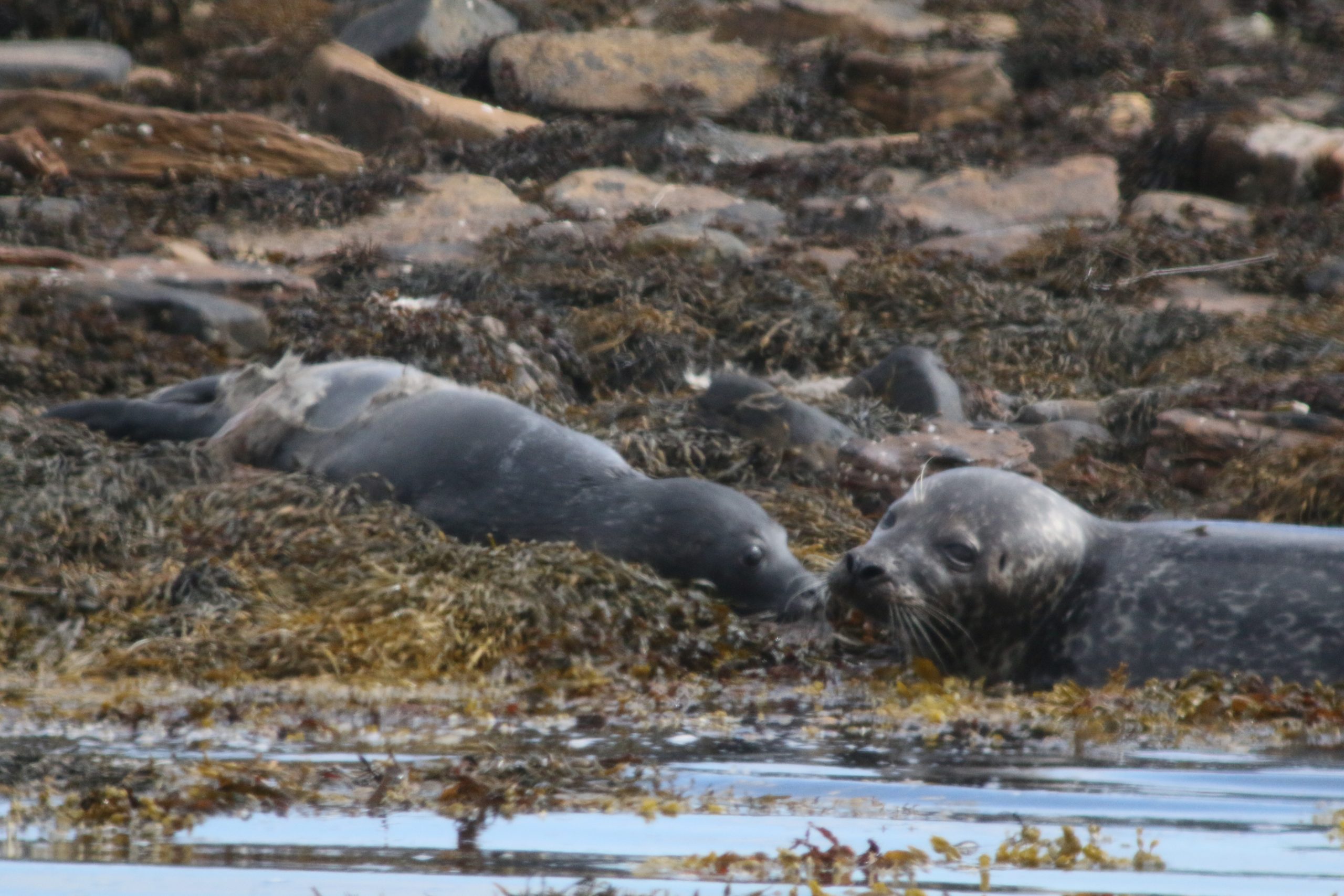

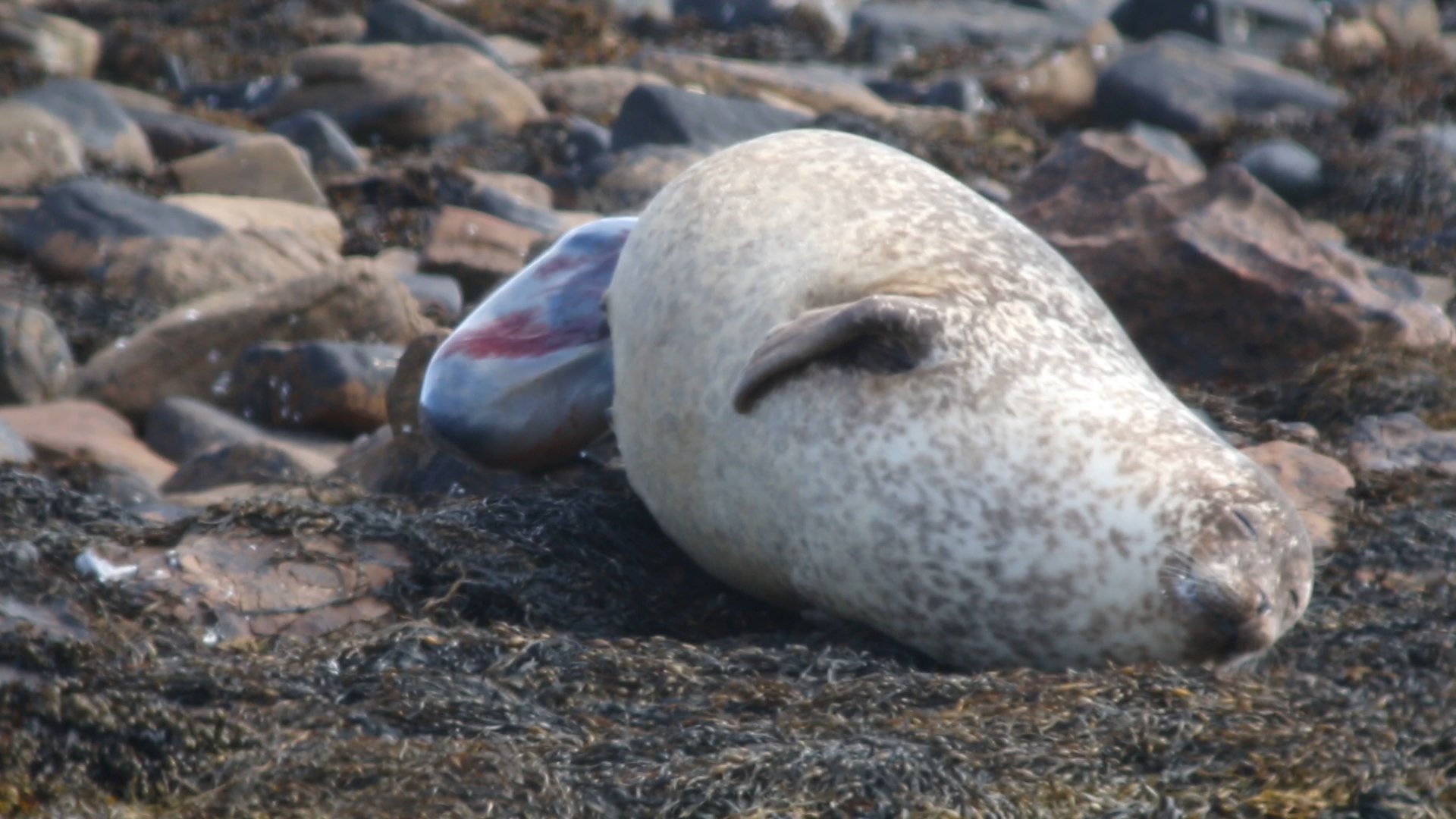
One of the females that gave birth that evening was Or085, she was also seen pupping by Monica during an observation in 2019. Only minutes old the pup was in the water and having its first swim. Pups are born with their unique markings so we will hopefully be able to keep track of these animals year on year.
Yesterday evening (20th of June) there were 5 pups harassing their mothers on the skerries with another 3 learning how to swim by following their mums around in the kelp. They are wonderful animals and I’m really enjoying having the chance to get to know them.

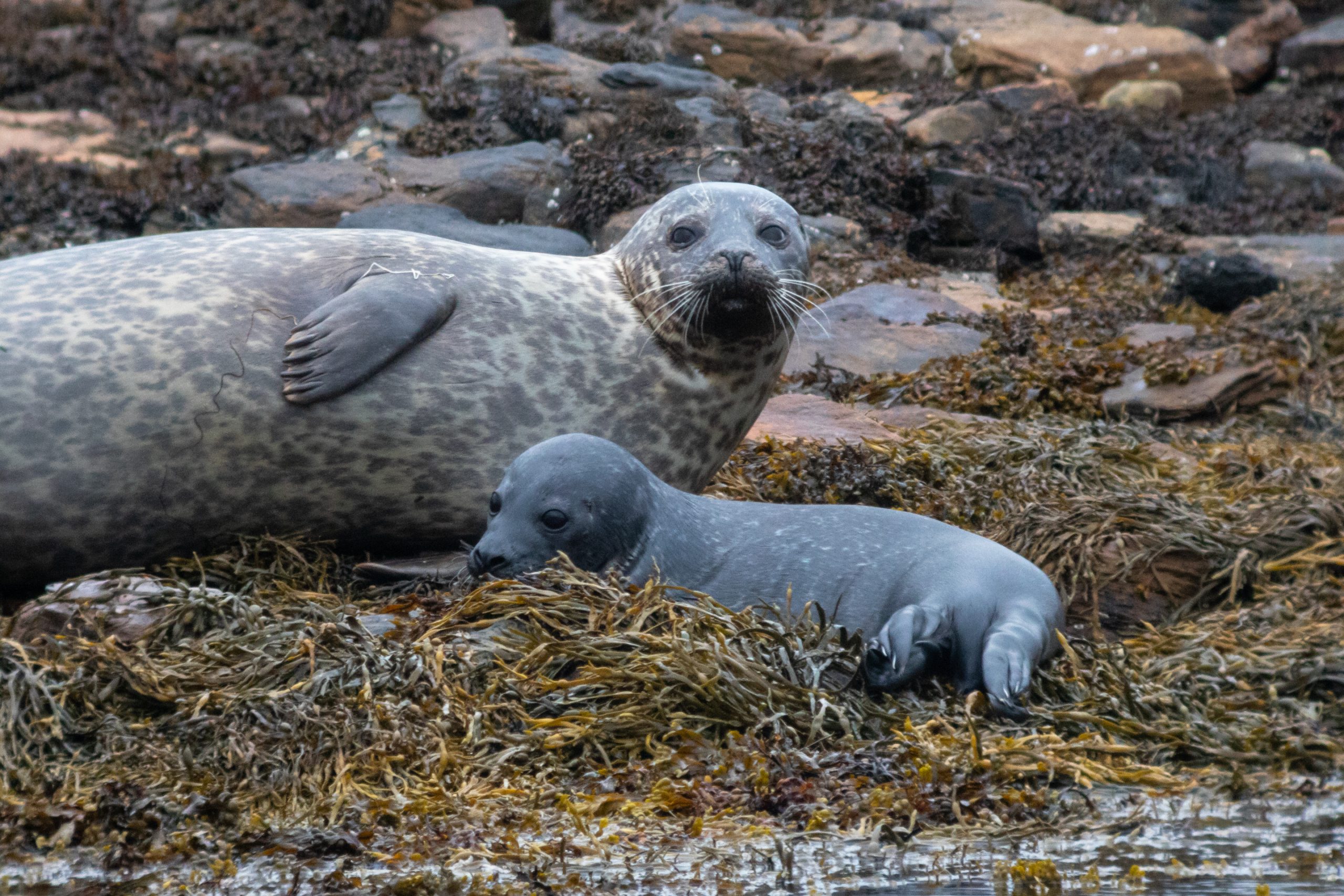
Harbour seals have not been the only marine mammal to keep me company at the study sites, there are usually a number of grey seals hauled out alongside the harbours. In addition to the seals, a Risso’s dolphin swam past a few days ago and I even had a very long distance sighting of a pod of orca!
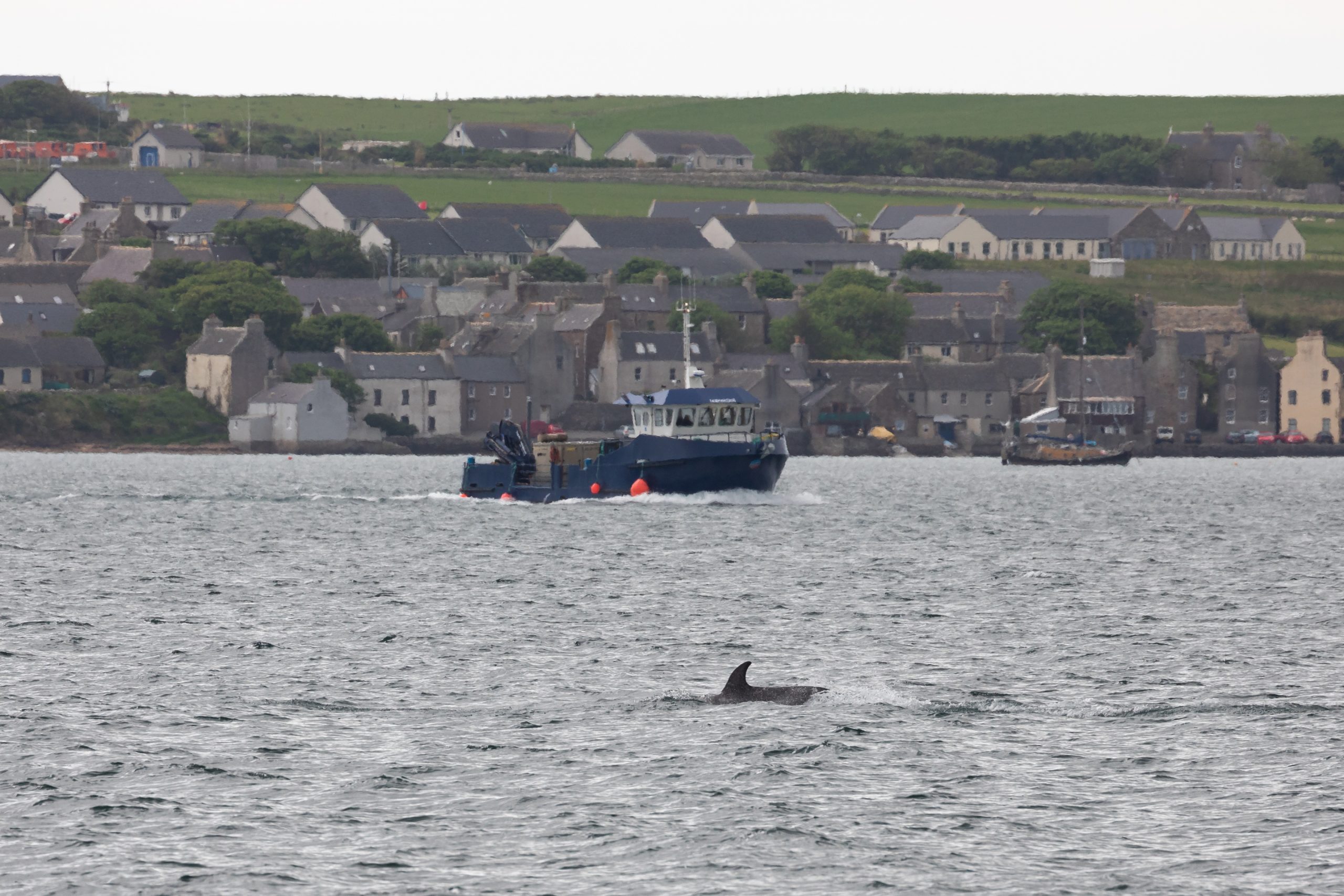
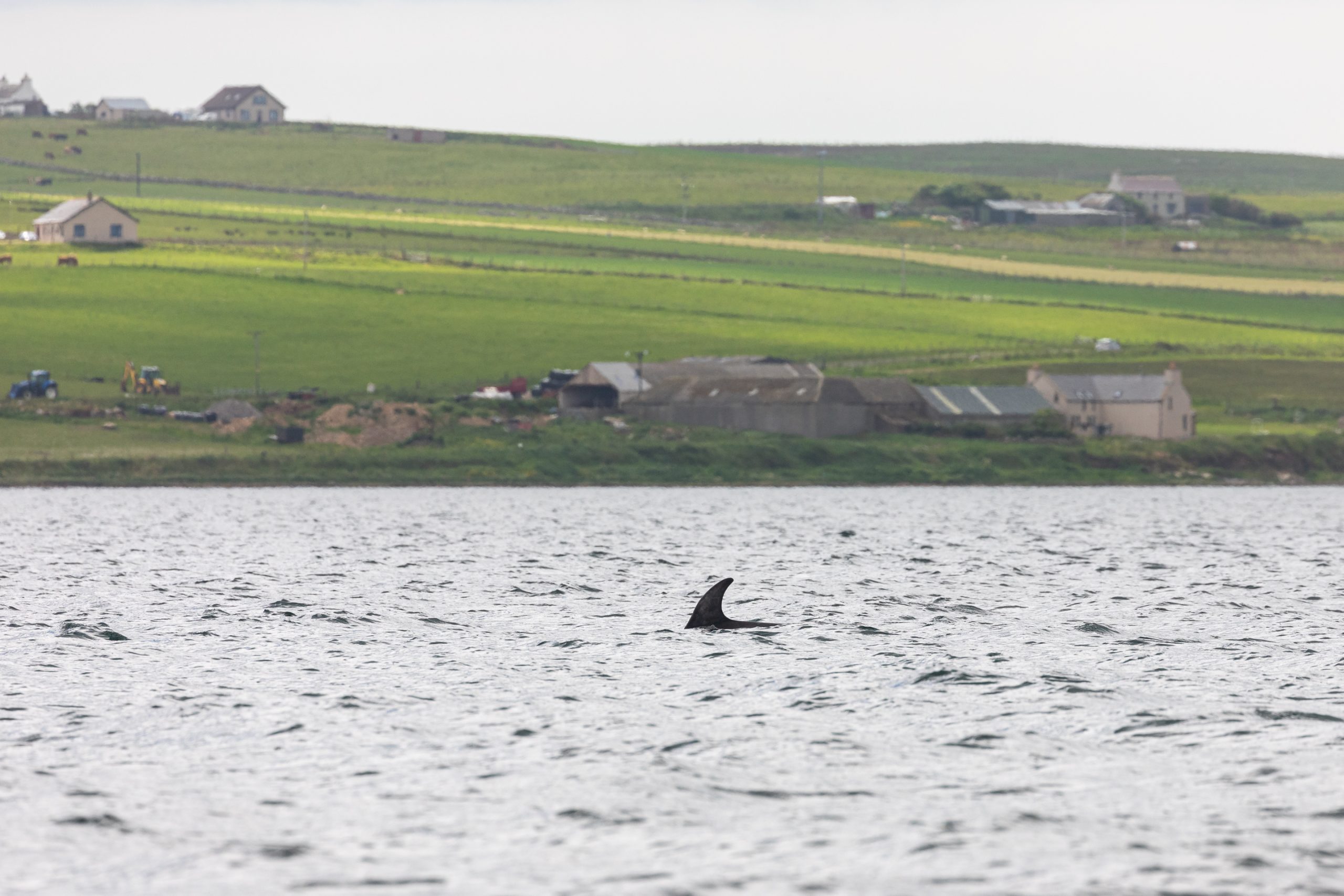
For more photos from my time on Orkney, mostly wildlife with a few landscapes thrown in, find me at instagram.com/johndickens.boz
All the best from beautiful Orkney, and happy midsummer!!
John
*sorry for the pun…


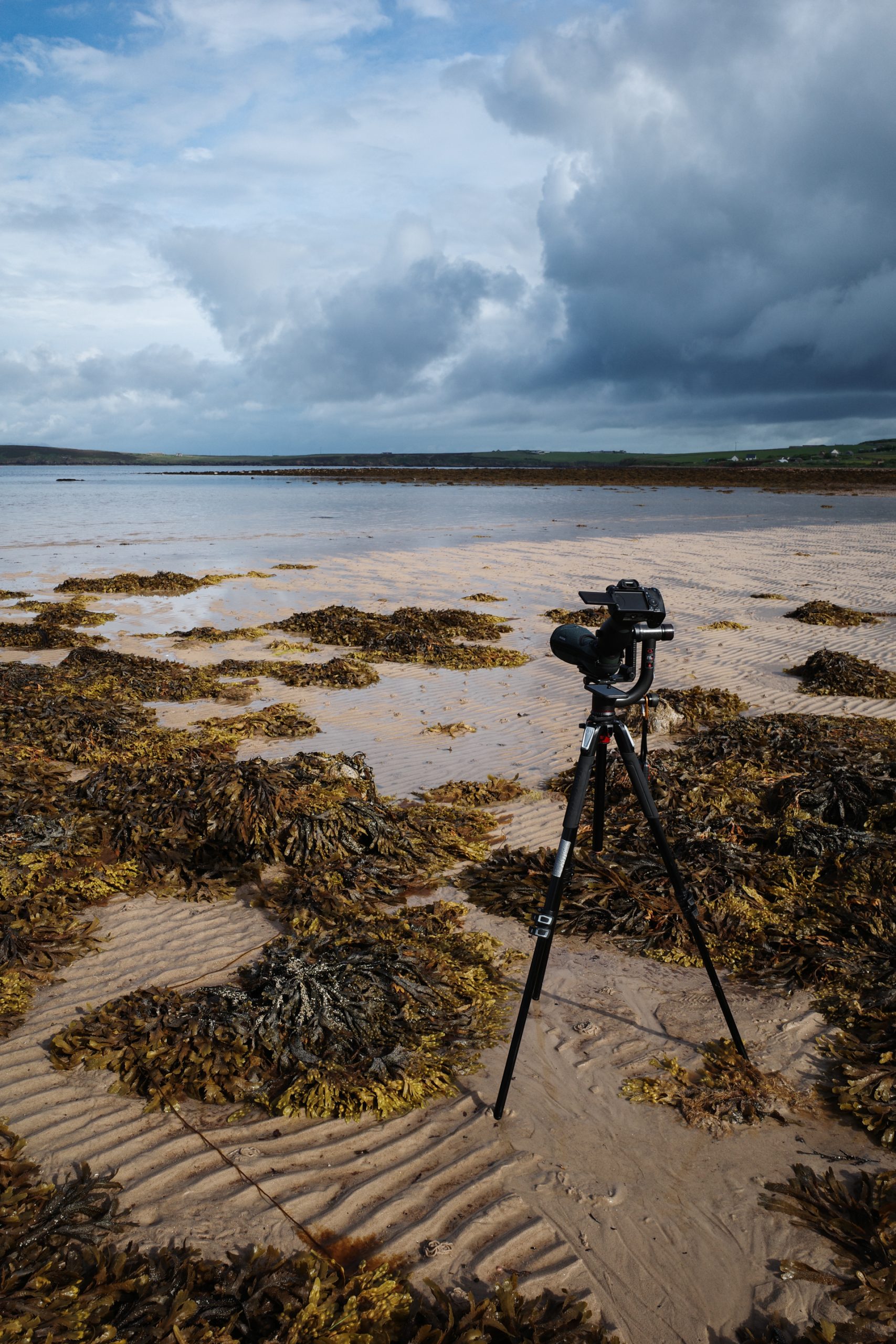
Great to see you at another wonderful place John.